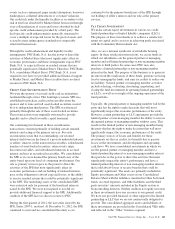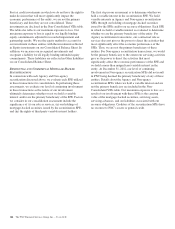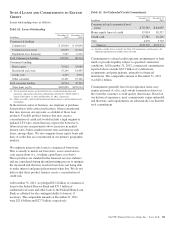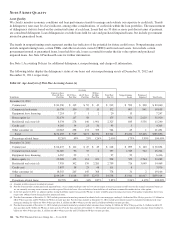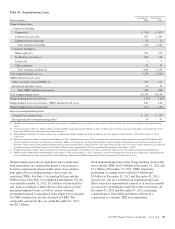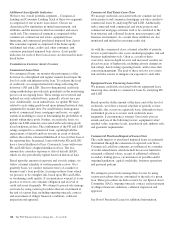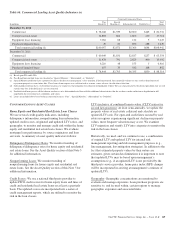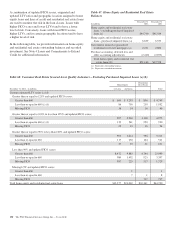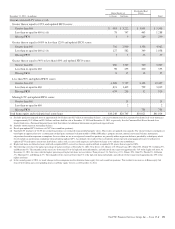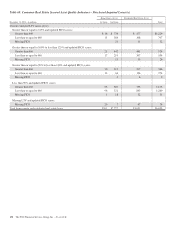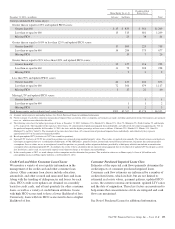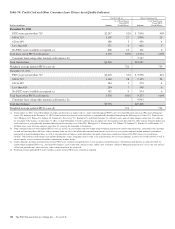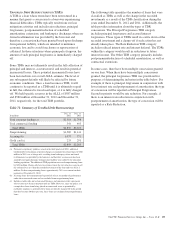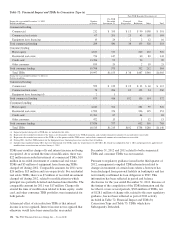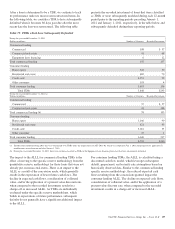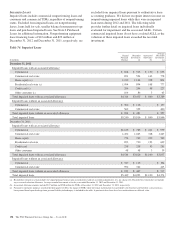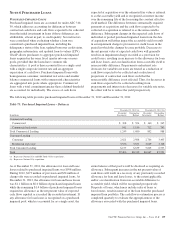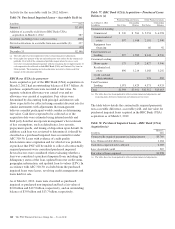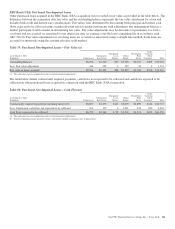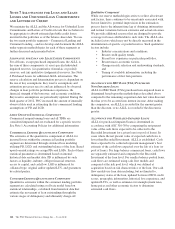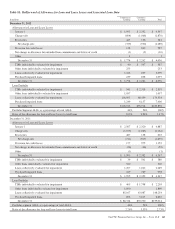PNC Bank 2012 Annual Report Download - page 172
Download and view the complete annual report
Please find page 172 of the 2012 PNC Bank annual report below. You can navigate through the pages in the report by either clicking on the pages listed below, or by using the keyword search tool below to find specific information within the annual report.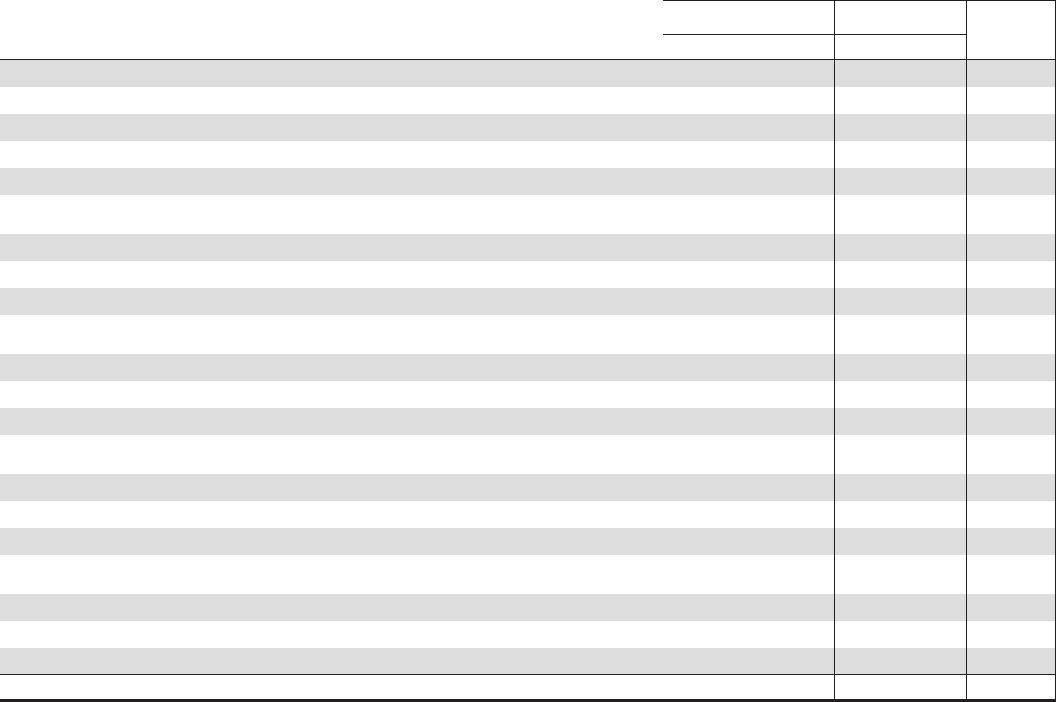
Home Equity (b) (c) (f)
Residential Real
Estate (b) (c)
December 31, 2011 - in millions 1st Liens 2nd Liens Total
Current estimated LTV ratios (d) (e)
Greater than or equal to 125% and updated FICO scores:
Greater than 660 $ 15 $ 833 $ 361 $1,209
Less than or equal to 660 15 513 681 1,209
Missing FICO 23 38 61
Greater than or equal to 100% to less than 125% and updated FICO scores:
Greater than 660 17 509 229 755
Less than or equal to 660 16 286 375 677
Missing FICO 19 7 26
Greater than or equal to 90% to less than 100% and updated FICO scores:
Greater than 660 10 127 116 253
Less than or equal to 660 11 79 208 298
Missing FICO 549
Less than 90% and updated FICO scores:
Greater than 660 46 423 404 873
Less than or equal to 660 72 366 679 1,117
Missing FICO 117 22 40
Missing LTV and updated FICO scores:
Greater than 660 11
Less than or equal to 660 112
Missing FICO 123
Total home equity and residential real estate loans $203 $3,202 $3,128 $6,533
(a) Amounts shown represent outstanding balance. See Note 6 Purchased Loans for additional information.
(b) For the estimate of cash flows utilized in our purchased impaired loan accounting, other assumptions and estimates are made, including amortization of first lien balances, pre-payment
rates, etc., which are not reflected in this table.
(c) The following states have the highest percentage of loans at December 31, 2012: California 21%, Florida 14%, Illinois 11%, Ohio 7%, Michigan 5%, North Carolina 5% and Georgia
at 5%, respectively. The remainder of the states have lower than a 4% concentration of purchased impaired loans individually, and collectively they represent approximately 32% of
the purchased impaired portfolio. At December 31, 2011, the states with the highest percentage of loans were as follows: California 22%, Florida 13%, Illinois 12%, Ohio 9%,
Michigan 5% and New York 4%. The remainder of the states have lower than a 4% concentration of purchased impaired loans individually, and collectively they represent
approximately 35% of the purchased impaired portfolio.
(d) Based upon updated LTV (inclusive of CLTV for second lien positions).
(e) Updated LTV (inclusive of CLTV for second lien positions) are estimated using modeled property values. These ratios are updated semi-annually. The related estimates and inputs are
based upon an approach that uses a combination of third-party AVMs, HPI indices, property location, internal and external balance information, origination data and management
assumptions. In cases where we are in an originated second lien position, we generally utilize origination balances provided by a third-party which do not include an amortization
assumption when calculating updated LTV. Accordingly, the results of these calculations do not represent actual appraised loan level collateral or updated LTV based upon a current
first lien balance, and as such, are necessarily imprecise and subject to change as we enhance our methodology.
(f) In the second quarter of 2012, we made changes to the assumptions used to determine lien position. This resulted in a decrease in Home equity 1st liens of $65 million and a
corresponding increase in Home equity 2nd liens as of December 31, 2011.
Credit Card and Other Consumer Loan Classes
We monitor a variety of asset quality information in the
management of the credit card and other consumer loan
classes. Other consumer loan classes include education,
automobile, and other secured and unsecured lines and loans.
Along with the trending of delinquencies and losses for each
class, FICO credit score updates are obtained on a monthly
basis for credit cards, and at least quarterly for other consumer
loans, as well as a variety of credit bureau attributes. Loans
with high FICO scores tend to have a lower likelihood of loss.
Conversely, loans with low FICO scores tend to have a higher
likelihood of loss.
Consumer Purchased Impaired Loans Class
Estimates of the expected cash flows primarily determine the
credit impacts of consumer purchased impaired loans.
Consumer cash flow estimates are influenced by a number of
credit related items, which include, but are not limited to:
estimated real estate values, payment patterns, updated FICO
scores, the current economic environment, updated LTV ratios
and the date of origination. These key factors are monitored to
help ensure that concentrations of risk are mitigated and cash
flows are maximized.
See Note 6 Purchased Loans for additional information.
The PNC Financial Services Group, Inc. – Form 10-K 153


